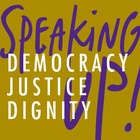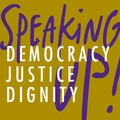It was a quirky millisecond contact of eyes in the city of angels, city of strangers.
In 2011, I was in Los Angeles, attending an Asian American symposium. During a break before supper, Ray Hsu, a poet from Vancouver and I were exploring an area called Japan town. My first time there. Gift shops, restaurants, tourists milling about. We were wandering back out of the plaza when from out of nowhere a voice called, “Joy!”
I turned, looked up.
“It’s YOU!” he said.
It took me a heart-beat.
“Oh! Asao!” The same happy eyes. The same excitable boyish charm.
I’d first met Asao in 1957 in Vancouver. I was twenty-one. He was a bubbly, beautiful kid, maybe a couple of years younger than me but more innocent. He was one of several youths Dad sponsored from Japan. My husband, David and I knew him well—lots of fun singing around the piano, meals, picnics. He and David drove across the Rockies to Coaldale and every new view, the gigantic mountains, rivers, and waterfalls enthralled him.
More than fifty years later, here he was, a fixture in L.A.’s Japan town. Arthur Nakane, one-man-band. He’d been on “America’s Got Talent.” He’d just finished his regular gig and happened to glance up when he was packing up his gear and I just happened to be walking past. One of those fleeting intersections.
“I’ll never let you go again,” he cried, crushing me to death in a hug. Typical Asao. I laughed, delighted to be reconnected.
Emails began to fly between us and I couldn’t say which one of us was more blown away by the garden of synchronicities into which we’d stumbled.
In the late ‘70’s, when I began writing Obasan, I was casting around for a name for the narrator’s family. Something short, or at least shorter than Nakayama, my maiden name. Naka-ta. Naka-no. Naka-ma. Or just Naka. Who knows where names in fiction come from. It could have been any name under the Japanese sun. Naka-ne? Why not? Common enough, I thought. I was to learn otherwise.
Asao, who read Obasan after our encounter, was not a little startled to find his surname used for the narrator’s family.
He wrote: There are very few Nakane families in Japan. So few that I have rarely seen the name in print and actually met JUST ONE Nakane in my entire life!
“Naka” means “middle” or “central”, thus “main” or “important.” “Ne” means “root(s).” Naka-ne means “main root(s).”
He gave me a brief history lesson. Traditionally Japanese did not have surnames except for the samurai. Farmers, craftsmen, and merchants, ranked by status in that order used first names, such as “John the Farmer” or “Jack the Smith.”
At the end of the 19th century westernization required surnames for all. My guess is that “commoners” made up names that sounded similar to samurai names.
The Nakanes were a small samurai clan governing a region north of Nagoya and there still exists a town named after them.
Besides using the Nakane name, there were other coincidences. One thing after another after another. I could not have said which of us was more surprised.
I have no clue why I chose the name Stephen for the narrator’s brother. Unknown to me a real Stephen Nakane existed. Asao’s favourite brother. Asao was the youngest of nine. Stephen was the only child to be given a western name, that is, until Asao at twenty-three received the name Arthur. It was from Stephen, his fun-loving brother, that he caught the joy of music and performance. The fictional Stephen Nakane in my novel was also filled with the joy of music and performance.
Wikipedia tells us that less than one percent of the population in Japan is Christian. Stephen Nakane was unusual in that he was a Christian, baptized at sixteen and sometimes teasingly called Jesus. Asao didn’t know, until he read Stephen’s memoir after Stephen died, that his mother had been a Christian. Moreover there were connections to an extremely remote spot, high in the mountains of the island of Shikoku where my father was born. It was a place from which his grandmother had come.
If I were a sleuth, I would follow those enticing threads, but it seemed I really didn’t have to follow them. They were in the weaving winds of fictions and facts. Intriguing connections to Hidden Christians existed in a field in that tiny location, I later learned.
The most startling to me of all the threads was one that connected Asao’s parents and the fictional family in Obasan to Nagasaki.
I have never understood how Nagasaki arrived in Obasan. All the way through the first draft, I struggled to know what had happened to the disappeared mother in Japan and in the end decided to leave it as an open-ended puzzle. But that was not acceptable to Louise Dennys of Lester and Orpen Dennys who finally accepted the much-rejected book.
“The reader has to know, Joy.”
I was back to pondering. World War II. Japan. The gentle story-telling young mother was lost to me, to the reader, and to her family in that far-away country, in that war. She could have been suffering from amnesia in some mountain village. She could have died in the firebombing of Tokyo. There could have been a scandal so she couldn’t return. She could be anywhere. Or nowhere.
Somehow, in inexplicable ways, it came to me that she had been in Nagasaki, on August 9, 1945. I knew nothing at all about Nagasaki, its history, its people, its geography, where it was on the map—nothing at all—except that an atom bomb had fallen there. I knew nothing about Hidden Christians.
A fictional woman was made absent to her fictional children in a real event. She hid her mutilated face from view. At some point it occurred to me that the scarring of her face was an allegory for the defacing of Divine Love. Her absence was a reflection of the absence of God as expressed in the post-Holocaust Death of God theology. But for me, Love was not dead. Love was where suffering was. Love was powerfully present at all times.
Perhaps it is because I am no longer a child, I can know your presence though you are not here, the adult daughter said of her silent mother in Obasan. It was my statement of faith that we are not abandoned no matter what it looks like.
I used to go around quoting a line from the feminist theologian, Rosemary Ruether, “Each of us must discover the secret key to divine abandonment—that God has abandoned divine power into the human condition utterly and completely, so that we may not abandon each other.”
In the emptying of Love’s power, I did not experience the “death of God,” nor did I conclude we were in a meaningless universe. I experienced life instead as full of empowering instruction and serendipities replete with Presence.
The real Stephen Nakane’s real parents had been from the real Nagasaki. Asao’s mother had been a student at a Christian school there. And his father happened to be there because of a Christian uprising.
Asao explained:
In the 17th century the Nakane clan was sent to Shimabara, east of Nagasaki, to suppress the Christian uprising initiated by Portugese missionaries and tradesmen.
Fierce battles, called “Shimabara No Ran” (the Riot in Shimabara) were led by a 16-year-old inspired Christian Amakusa Shiroh, a la Joan of Arc. The fighting continued for six months involving 37,000 farmers rebelling against their regional lord who had laid unfair taxes on them despite a series of poor harvest years. Many of the rebels were Christians and carried the cross on their banners.
After a few setbacks, the Shogun sent troops of 125,000, finally crushing the opposition in 1638. This was followed by a ban on Christianity altogether and Japan cut its ties with Portugal. That was the beginning of Japan’s closed door policy that lasted for 215 years until Commander Perry of the U.S. Navy forced Japan to open itself to trade and signed a treaty in 1854.
The remaining Nakane clan must have stayed in Shimabara to keep order in the region since my father was from Shimabara. I am still legally registered at the city hall of Shimabara! And I have never been there! (I was born and raised in Kyoto, the old capital of Japan.)
If I had known and used any of this when I was writing Obasan, I could have avoided one criticism I received that Nagasaki was not integral to the book.
So there they were, Asao’s parents, his mother, a Christian and his father from a samurai clan that fought against Christians. The enemy. The beloved. Together in Nagasaki.
*Joy Kogawa was a panelist in the “Poetic License? Nikkei Writers and the Representation of History” and “Border Crossings: A Comparative Assessment of Japanese American and Japanese Canadian Redress” sessions at JANM’s National Conference, Speaking Up! Democracy, Justice, Dignity on July 4-7, 2013 in Seattle, Washington.
Listen to the session "Poetic License?" >>
Listen to the session "Border Crossings" >>
© 2013 Joy Kogawa






